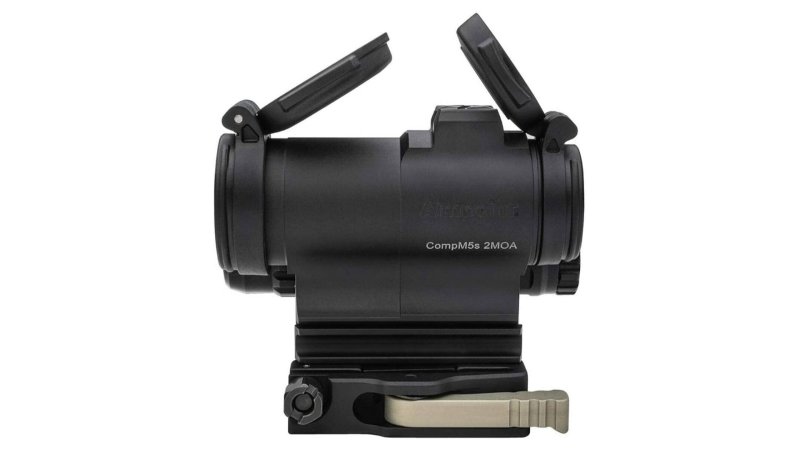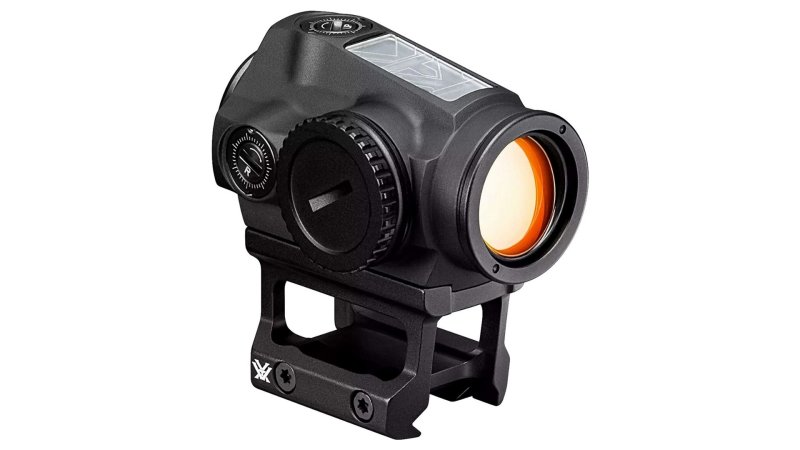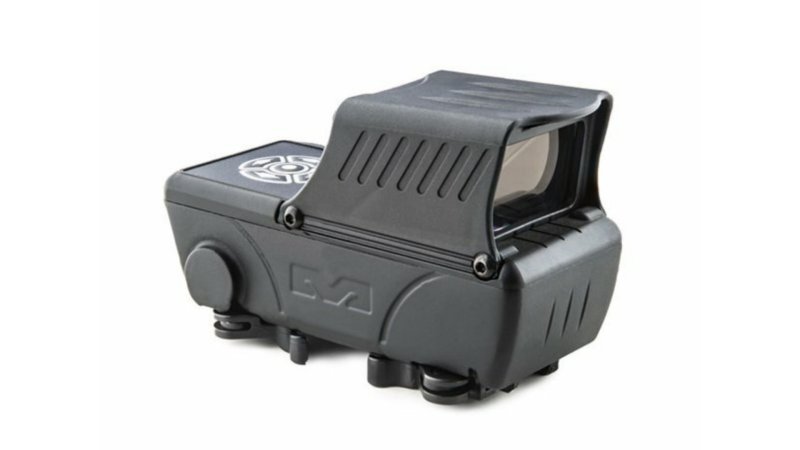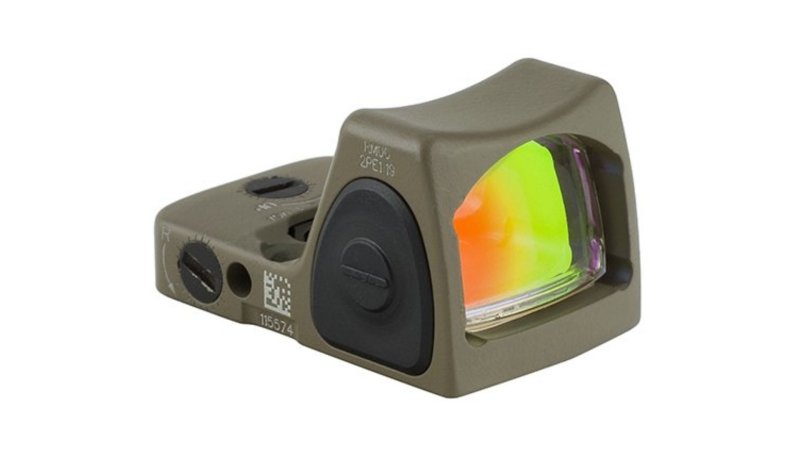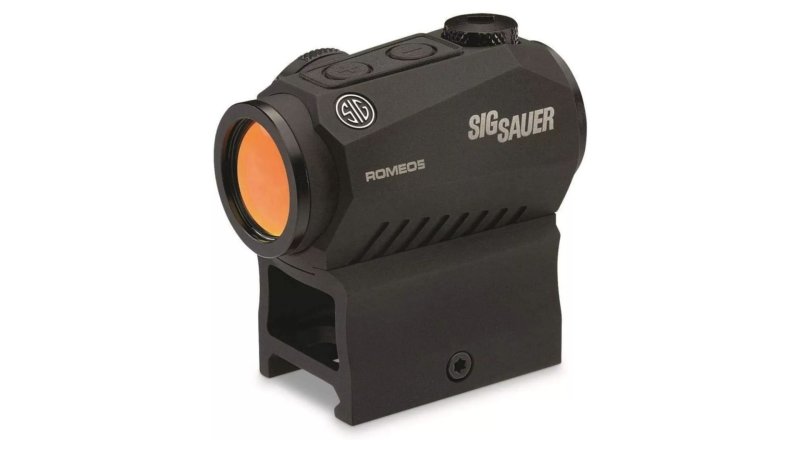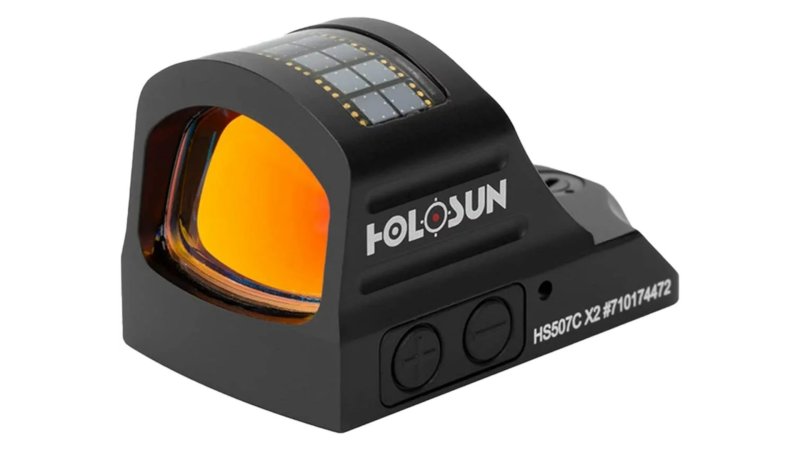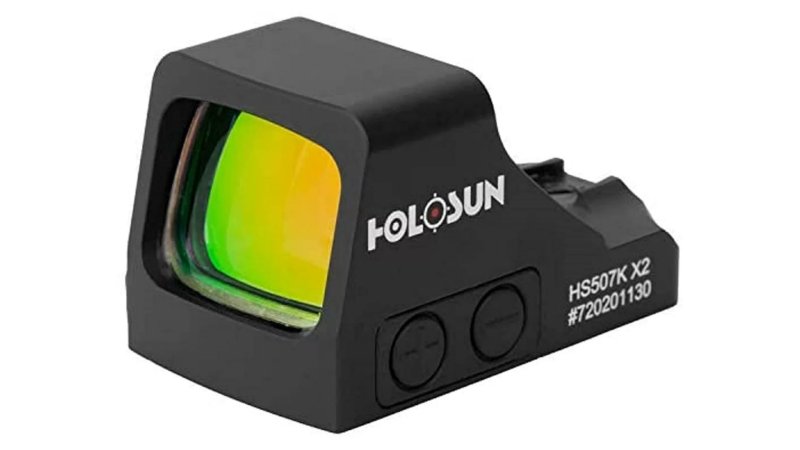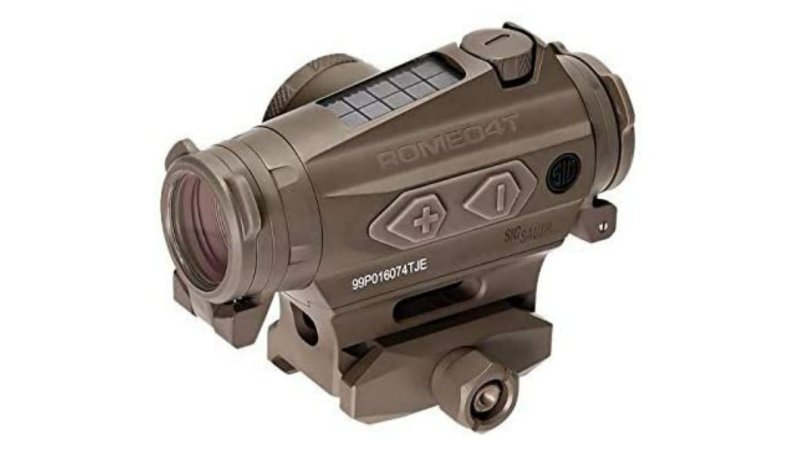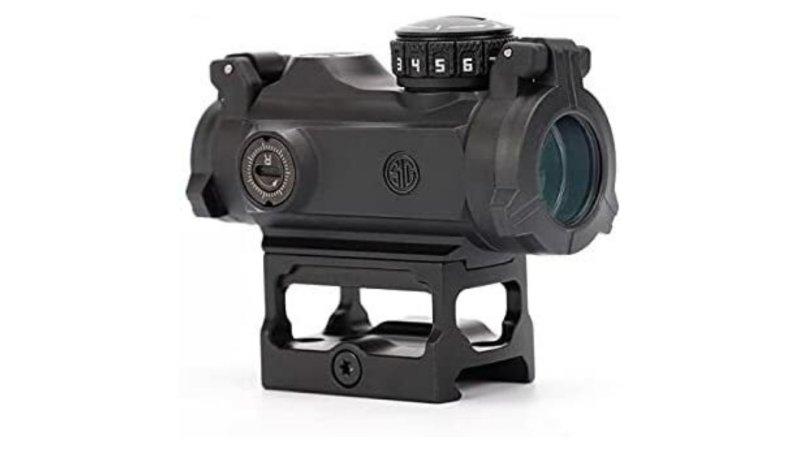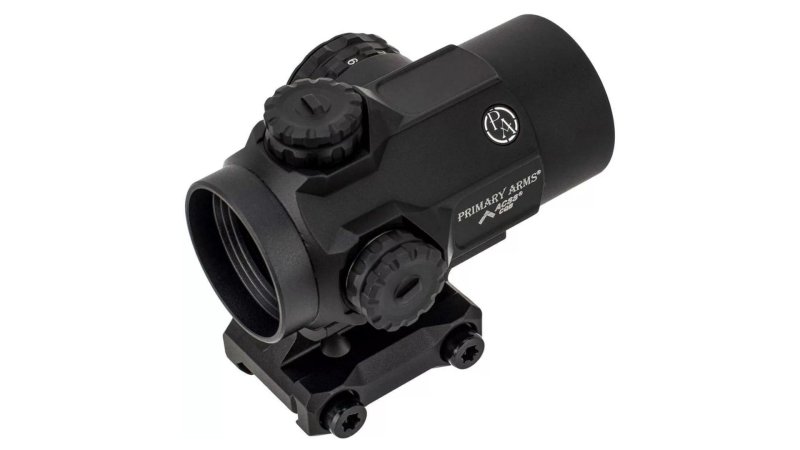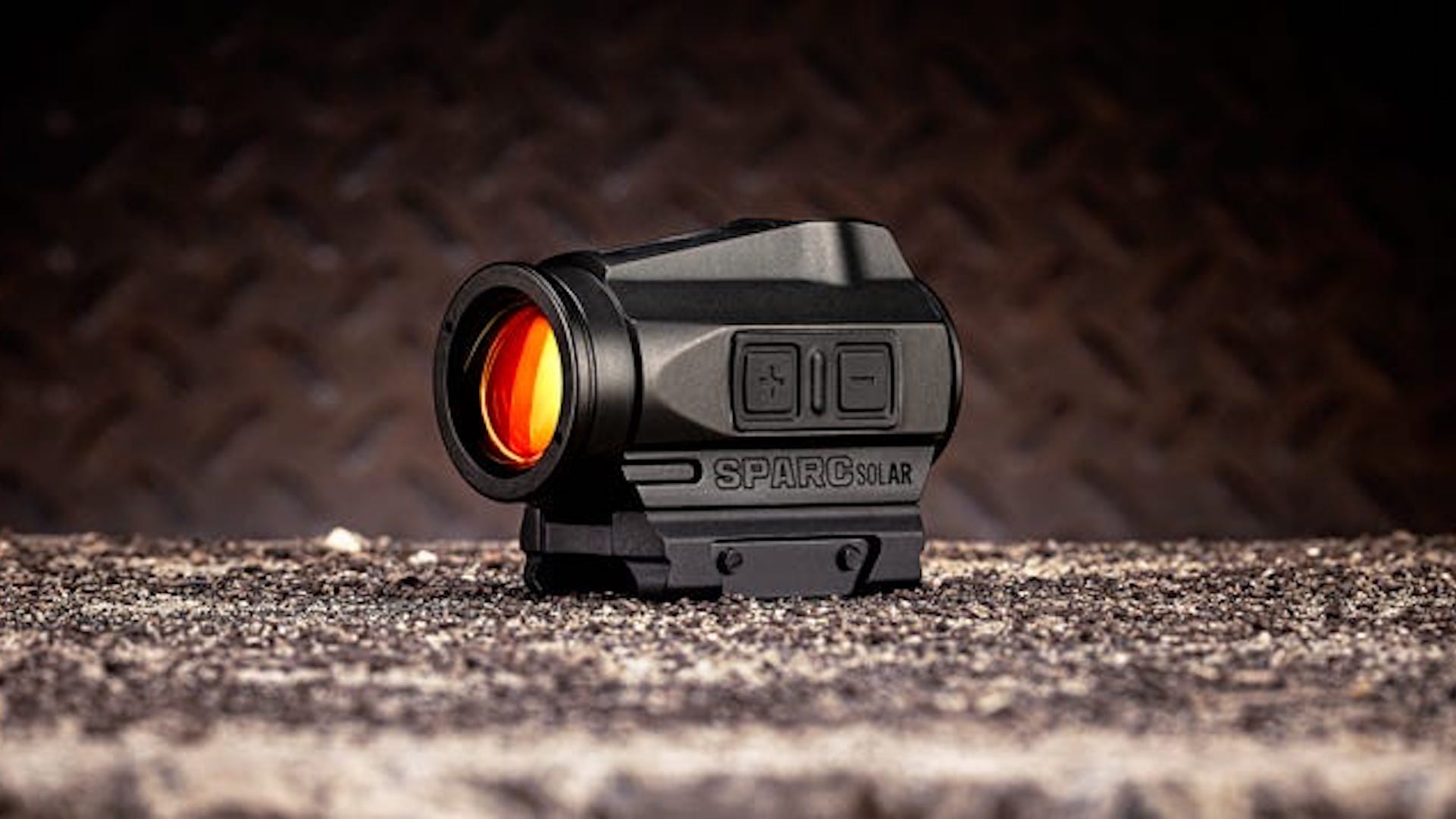

We may earn revenue from the products available on this page and participate in affiliate programs.
A red dot sight will help you shoot better with any kind of firearm. That’s because the optic reduces skills like sight alignment and sight picture down to simply aiming a dot — usually red, sometimes green, and occasionally gold — at a target. Unlike a magnifying scope, red dots are reflex sights meant for quickly engaging targets out to 100 yards (or more with magnifiers).
For many, it isn’t a question of do you want a red dot sight, but rather why the hell wouldn’t you want one? Today, we’ll look at the best red dot sights available and help you find the perfect option for whatever task and purpose suits you.
- Best Overall: Aimpoint CompM5s
- Best Value: Vortex Sparc Solar
- Editor’s Choice: Meprolight Foresight
- Best for Handguns: Trijicon RMR Type 2
- Best Budget: SIG ROMEO5
- Best for Shotguns: Holosun 507C
- Best Mini: Holosun 507K
- Best for AR-15s: SIG ROMEO4T
- Best for Under $100: SIG MSR
- Best for Under $200: Primary Arms SLX Microdot
Best Overall
Aimpoint CompM5s
Pros
- Crisp 2 MOA Dot
- Lightweight design
- Compatible with NVGs and magnifiers
- Extremely rugged
Cons
- Expensive
- No fancy features
Product Specs
- Weight: 5.8 ounces
- Length: 3.3 inches
- Reticle: 2 MOA red dot
- Battery life: 50,000 hours
Best Value
Vortex Sparc Solar
Pros
- Insane battery life
- Auto switches from solar to battery
- Aimpoint Micro Mount compatible
- Night vision compatible
Cons
- Broad 1 MOA adjustments
- Somewhat crowded view
Product Specs
- Weight: 5.9 ounces
- Length: 2.6 inches
- Reticle: 2 MOA
- Battery life: 150,000 hours
Editor’s Pick
Meprolight Foresight
Pros
- Highly customizable
- True heads-up display
- Can save 10 different zeroes
- Wide field of view
Cons
- Rechargeable battery only
- Tough to use without an external device
- Expensive
Product Specs
- Weight: 9.9 ounces
- Length: 4.6 inches long
- Reticle: 20 total choices
- Battery life: 50 hours with brightest setting and maxed out HUD feature
Best Red Dot Sight for Handguns
Trijicon RMR Type 2
Pros
- Extremely durable
- Long battery life
- Various reticle sizes
Cons
- Bottom-mounted battery
- Expensive
Product Specs
- Weight: 1.2 ounces
- Length: 1.8 inches
- Reticle: Varies
- Battery life: 4 years
Best Budget Red Dot Sight
SIG ROMEO5
Pros
- Affordable
- Tactile adjustment buttons
- Multiple mounts
- MOTAC Shake Awake Tech
Cons
- Large 1 MOA adjustments
- Heavy blue tint
Product Specs
- Length: 2.46 inches
- Weight: 5.1 ounces
- Reticle: 2 MOA dot
- Battery life: 40,000 hours
Best Red Dot Sight for Shotguns
Holosun 507C
Pros
- Solar panel
- Multiple reticles
- Affordable price point
- Side-mounted battery
Cons
- Small controls
Product Specs
- Length: 1.78 inches
- Weight: 1.5 ounces
- Reticle: Multiple
- Battery life: 50,000 hours
Best Mini Red Dot Sight
Holosun 507K
Pros
- Robust
- Three reticles
- Two button controls
- Side-loading battery
Cons
- Heavy blue tint
Product Specs
- Length: 1.6 inches
- Weight: 1 ounce
- Reticle: Multiple
- Battery life: 50,000 hours
Best Red Dot Sight for AR-15s
SIG ROMEO4T
Pros
- Awesome reticle
- Solar power backup
- Long battery life
- Tough as hell
Cons
- Somewhat heavy
Product Specs
- Length: 3.33 inches
- Weight: 7.6 ounces
- Reticle: 4 options
- Battery life: 100,000 hours
Best Red Dot Sight Under $100
SIG MSR
Pros
- Super cheap
- Oddly robust
- Out-of-the-box ready
Cons
- Reticle is not crisp
- Adjustment wheel is super stiff
Product Specs
- Length: 3.1 inches
- Weight: 4.9 ounces
- Reticle: 2 MOA red dot
- Battery life: 20,000 hours
Best Red Dot Sight Under $200
Primary Arms SLX Microdot
Pros
- Awesome reticle
- Durable design
- Awesome price point
- Versatile
Cons
- Low battery life
Product Specs
- Length: 2.35 inches
- Weight: 6.5 ounces
- Reticle: ACSS-CQB
- Battery life: 12,000 hours
Why you should trust us
I could tell you all about my Marine Corps service, my competitive shooting experience, and my years as a gear reviewer. Still, honestly the best credential I can offer you are my credit card statements. Over the course of years, I’ve purchased tons of optics — good and bad — and I’ve learned through trial and error what works and what doesn’t.
Types of red dot sights
Miniature and micro red dot sights
Miniature and micro red dot sights are small. Miniature sights like the RMR work well on pistols, as backup sights on magnified optics, and even as primary optics on some long guns. Micro red dot sights are almost entirely used with pistols.
These little optics have a very small window and are best used with a two-eyed, open shooting style. They often won’t pair with magnifiers, and what you see is what you get. Their main benefits are small size and low weight.
Compact red dots
Compact red dots refer to red dots with an objective lens or window from 18mm to 25mm in size. They can be used with magnifiers and night vision devices. Compact red dots are often enclosed optics and can be tubular or square in shape. These optics are extremely reliable, and offer a smaller, lighter alternative for long-gun red dots.
Full-sized red dots
Full-sized red dots are often 25mm and higher. While they are falling out of favor slightly, they still have a place in the shooting sports. Full-sized red dots offer a massive window and a wide field of view. Plus, they pair very well with magnifiers and clip-on thermal or night vision optics. They are perfect for duty rifles because they’re incredibly durable.
Key features of red dot sights
Reticle
Red dot sounds pretty dang simple when it comes to picking a reticle, right? Most of the time, the reticles are just red dots, but you might want to consider the size of the dot. Smaller dots work best for weapons designed for precision, i.e., rifles like the AR-15. Bigger dots are easier to see and often faster to get on target, but lack precision for long range use, making them perfect for shotguns, subguns, and pistols.
Additionally, the modern red dot might incorporate any number of reticle designs these days. These reticles are awesome and provide some added versatility to your optic. These can be the addition of a large circle around the dot, drop points, and more.
Brightness levels
On the high end, a red dot needs to be bright enough to see in the brightest part of the day. Some cheaper red dots are challenged by the brightness the sun delivers at high noon. On the flip side, you might need a setting low enough to allow for night vision use. Night vision settings used to be relevant for professional shooters only, but night vision has become absurdly popular within the civilian shooting realm, so this feature matters more now than ever.
Controls
How do you zero the optic? How do you adjust brightness settings? You should consider both when it comes to buying a red dot. Buttons are often better than wheels, and recessed turrets provide a simpler system for getting you on target and staying there. Buttons allow for smooth and quick adjustments, and recessed turrets won’t slip and lose zero if they get bumped or dumped.
Benefits of red dot sights
Speed
With a properly zeroed red dot sight, all you need to do is put the dot on target and pull the trigger. It’s much quicker than aligning iron sights and simplifies the entire shooting process. Shooters with red dots will be faster than shooters with iron sights. The speed red dots offer has made them the CQB sight of choice for professional gunslingers in the armed forces.
Accuracy
Iron sights are accurate, but are often large and easily obscure the target, plus they require sight focus. Red dot sights present a very small reticle that is less likely to obscure the target than a front sight. Additionally, shooters can focus on the target and keep it clear, versus focusing on the reticle or sight and having a blurry target. This makes it easier to shoot accurately.
Versatility
Red dots are insanely versatile optics. They can be used on nearly any platform (handgun, shotgun, or rifle), they fit on tactical weapons, hunting tools (including bows), and competition guns.
Pricing considerations for red dot sights
Budget
Good budget red dot sights often cost a little more than $100. They’re designed for personal use like plinking and recreational shooting, but it’s not unheard of to use them for hunting or even some light competition. They’re generally not built for professional or duty use.
Mid-tier
Mid-tier red dot sights cost anywhere from $200 to $500. They tend to have a higher quality construction than budget optics, but usually aren’t built for the most extreme conditions. Nonetheless, they’re usually tough and designed for things like home defense, hunting, competition, and even limited duty. While I wouldn’t jump out of a plane with one, I could see a mid-tier red dot succeeding in the hands of police and security forces.
Duty-grade
When you need to issue an optic to Joe, you want the toughest optic in the market. They’re priced $500 or more, but they’re designed to resist a range of punishment. From full submersion to being dropped or kicked and misused by the least intelligent PFC in the platoon.
How we chose our top picks
For this review, I researched a wide range of red dot optics and considered all the options I could find that would be considered proven, not just the ones I’ve personally used. Why be boring when the world has so many great options out there? However, I did handle all the red dots on this list. My picks were informed by my personal experience and the experiences of firearm instructors, competitive shooters, and professional gunslingers.
FAQs on red dot sights
You’ve got questions, Task & Purpose has answers.
Q: What red dot sights do the Navy SEALs use?
A: Aimpoint and Trijicon are the go-to for Navy SEALs — specifically the Aimpoint Micro series and the Trijicon RMR for handguns.
Q: What is the clearest red dot sight?
A: The Aimpoint CompM5s provides a crystal clear viewing window tied to a very crisp and awesome little red dot.
Q: Do soldiers use red dot sights?
A: The Army currently issues the M68 CCO, aka the Aimpoint CompM4, to most soldiers. Additionally, SOCOM commandos utilize the Trijicon RMR on handguns.
Our gear section
Travis Pike is a former Marine machine gunner who served with 2nd Battalion, 2nd Marines for five years. He deployed in 2009 to Afghanistan and again in 2011 with the 22nd MEU(SOC) during a record-setting 11 months at sea. He’s trained with the Romanian Army, the Spanish Marines, the Emirate Marines, and the Afghan National Army. He plays in the great outdoors of Northwest Florida and enjoys good beer, sharp knives, and long walks in the woods.
